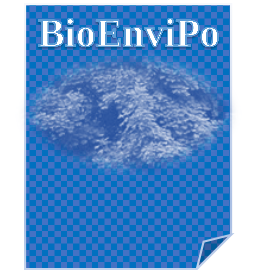Phytoremediation of batik industry wastewater using water hyacinth plant as a medium for maintaining Cyprinus Carpio L.
DOI:
https://doi.org/10.31763/bioenvipo.v1i1.382Keywords:
batik liquid waste, Phytoremediation, Hyacinth plantAbstract
Batik is one of Indonesia's cultural heritage that has been recognized internationally. Currently, public demand for batik continues to increase, increasing the production of the batik industry in Banten and will be the impact of increasing batik liquid waste. The results of batik production waste are usually directly disposed of through public water channels without being treated first. This condition can cause environmental pollution that will disrupt the sustainability of aquatic ecosystems. The purpose of this study was to determine the effect of phytoremediation of batik industrial wastewater on the lethality and structure of Cyprinus Carpio L. scales. This study used a completely randomized design with 5 treatments and 3 repetitions. The treatment used was the maintenance of Cyprinus Carpio L. in the wastewater from the phytoremediation batik industry with concentrations of 0%, 5%, 10%, 20%, and 40%. The results showed that phytoremediation using water hyacinth plants reduced the BOD and COD content of batik waste. Phytoremediation of batik waste affects the lethality of Cyprinus Carpio L. and the structure of the scales. At concentrations of 20% and 40%, the highest average percentage of lethality is 60% death. Fish mortality is characterized by changes in behavior such as movement activity, body balance, and color morphology. The concentration of the batik industry wastewater also affects the amount of lethality and the sublethal effect of Cyprinus Carpio L. The attachment of the waste indicates the sublethal effect to the scales, the highest concentration of which is 20% and 40%, respectively.
References
Sari, M. Pengendalian Limbah Cair di Pabrik Benang Karet. (2009).
Rossiana, N. Uji toksisitas limbah cair penyamakan kulit terhadap reproduksi dan pertumbuhan Daphnia carinata King-Toxicity test of tannery liquid waste disposal to reproduction daphnia carinata king. (2007).
Tangahu, B. V. & Putri, A. P. The degradation of Bod and Cod of batik industry wastewater using Egeria Densa and Salvinia Molesta. J. Sains &Teknologi Lingkung. 9, 82–91 (2017).
Sirait, M. Cleaner production options for reducing industrial waste: the case of batik industry in Malang, East Java-Indonesia. IOP Conf. Ser. Earth Environ. Sci. 106, 1–5 (2018).
Kristanto, P. Ekologi industri. (Penerbit Andi, 2002).
Kementerian Lingkungan Hidup. Peraturan menteri negara lingkungan hidup no 01 tahun 2010 tentang tata laksana pengendalian pencemaran air. (Kementerian Lingkungan Hidup, 2010).
Soegianto, A., Primarastri, N. A. & Winarni, D. Pengaruh pemberian kadmium terhadap tingkat kelangsungan hldup dan kerusakan struktur insang dan hepatopankreas pada udang regang. Berk. Penelit. Hayati 10, (2004).
Kimball & W, J. Biologi. (Erlangga, 1991).
Suharto, B. dkk. Pengolahan limbah batik tulis dengan fitoremediasi menggunakan tanaman eceng gondok ( Eichornia Crassipes ). J. Sumberd. Alam dan Lingkung. 3, 14–19 (2016).
Djo, Y. H. W., Suastuti, D. A., Suprihatin, I. E. & Sulihingtyas, W. D. Fitoremediasi menggunakan tanaman eceng gondok (Echhornia crassipes) untuk menurunkan COD dan kandungan Cu dan Cr limbah cair laboratorium analitik Universitas Udayana. Cakra Kim. 5, 137–144 (2017).
Nuha, U. A., Martin, F. P. & Mubarok, I. Toksisitas letal akut limbah cair tenun troso terhadap ikan mas (Cyprinus carpio L). Life Sci. 5, 1–8 (2016).
Handajani, H. & Widodo, W. Nutrisi Ikan. (UMM Press Malang, 2010).
Jusmaldi, . & Hariani, N. Hubungan panjang bobot dan faktor kondisi ikan wader bintik dua Barbodes binotatus (Valenciennes, 1842) di Sungai Barambai Samarinda Kalimantan. J. Iktiologi Indones. 18, 87–101 (2018).
Andriani, R. & Hartini, H. Toksisitas limbah cair industri batik terhadap morfologi sisik ikan nila gift (Oreochomis nilotocus). J. SainHealth 1, 83–91 (2017).
Pratiwi, H. C. Pengaruh toksisitas akut air lindi terhadap ikan mas (Cyprinus carpio). (Universitas Airlangga, 2014).
Pratiwi, Y. Penentuan tingkat pencemaran limbah industri tekstil berdasarkan nutrition value coeficient bioindikator. J. Teknol. 3, 129–137 (2010).
Pratiwi, D. E. Efektivitas instalasi pengolahan air limbah dalam penurunan kadar chemical oxygen demand (COD) di instalasi pengolahan air limbah Mojosongo kota Surakarta. (Universitas Diponegoro, 2010)
Downloads
Published
How to Cite
Issue
Section
License
Copyright (c) 2021 Hadi Susilo, Swastika Oktavia, Roudotussa’adah Roudotussa’adah

This work is licensed under a Creative Commons Attribution-ShareAlike 4.0 International License.
Authors who publish with BIOLOGICAL ENVIRONMENT AND POLLUTION agree to the following terms:
- Authors retain copyright and grant the journal right of first publication with the work simultaneously licensed under a Creative Commons Attribution License (CC BY-SA 4.0) that allows others to share the work with an acknowledgment of the work's authorship and initial publication in this journal.Â
- Authors are able to enter into separate, additional contractual arrangements for the non-exclusive distribution of the journal's published version of the work (e.g., post it to an institutional repository or publish it in a book), with an acknowledgment of its initial publication in this journal.
- Authors are permitted and encouraged to post their work online (e.g., in institutional repositories or on their website) prior to and during the submission process, as it can lead to productive exchanges, as well as earlier and greater citation of published work.


